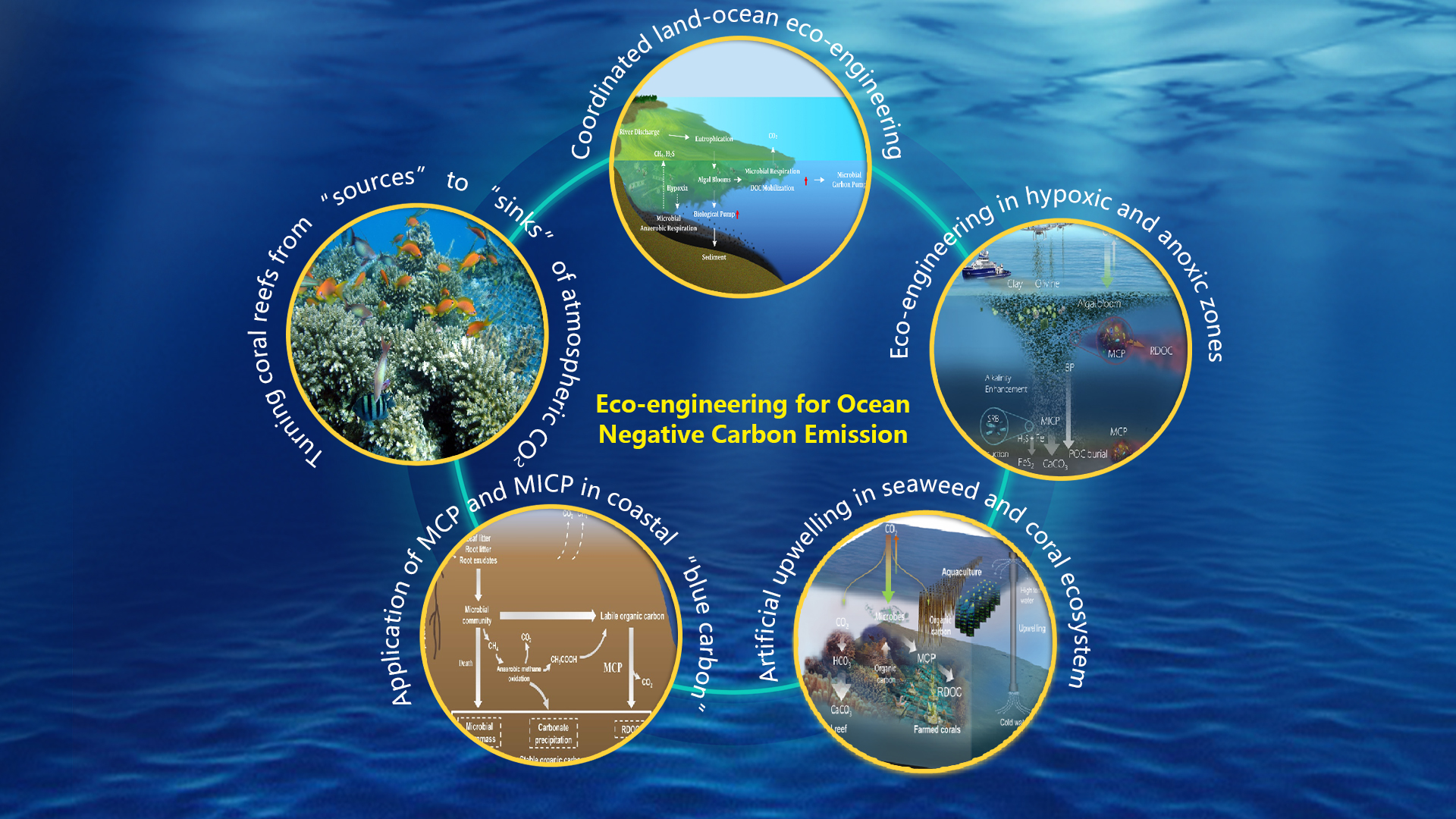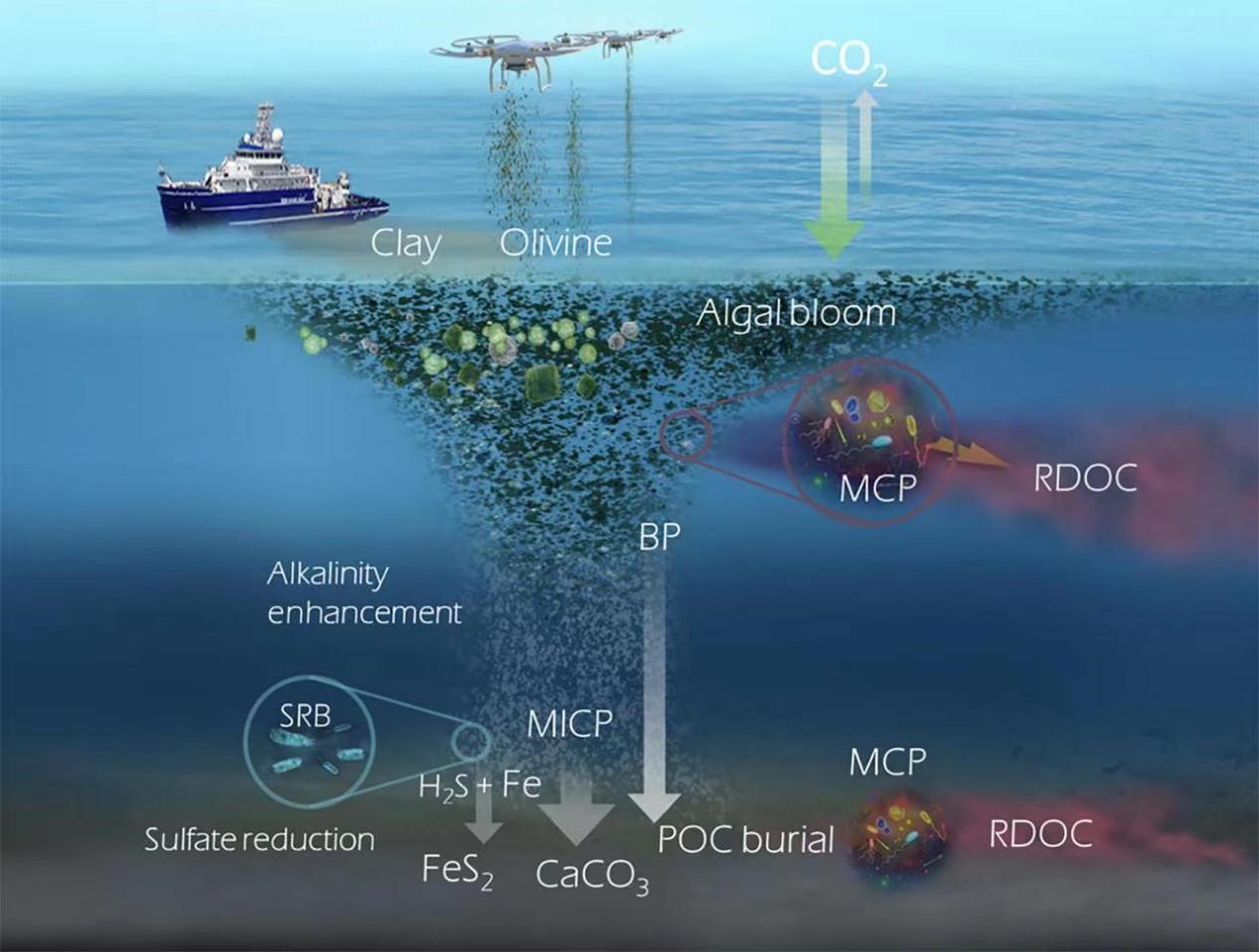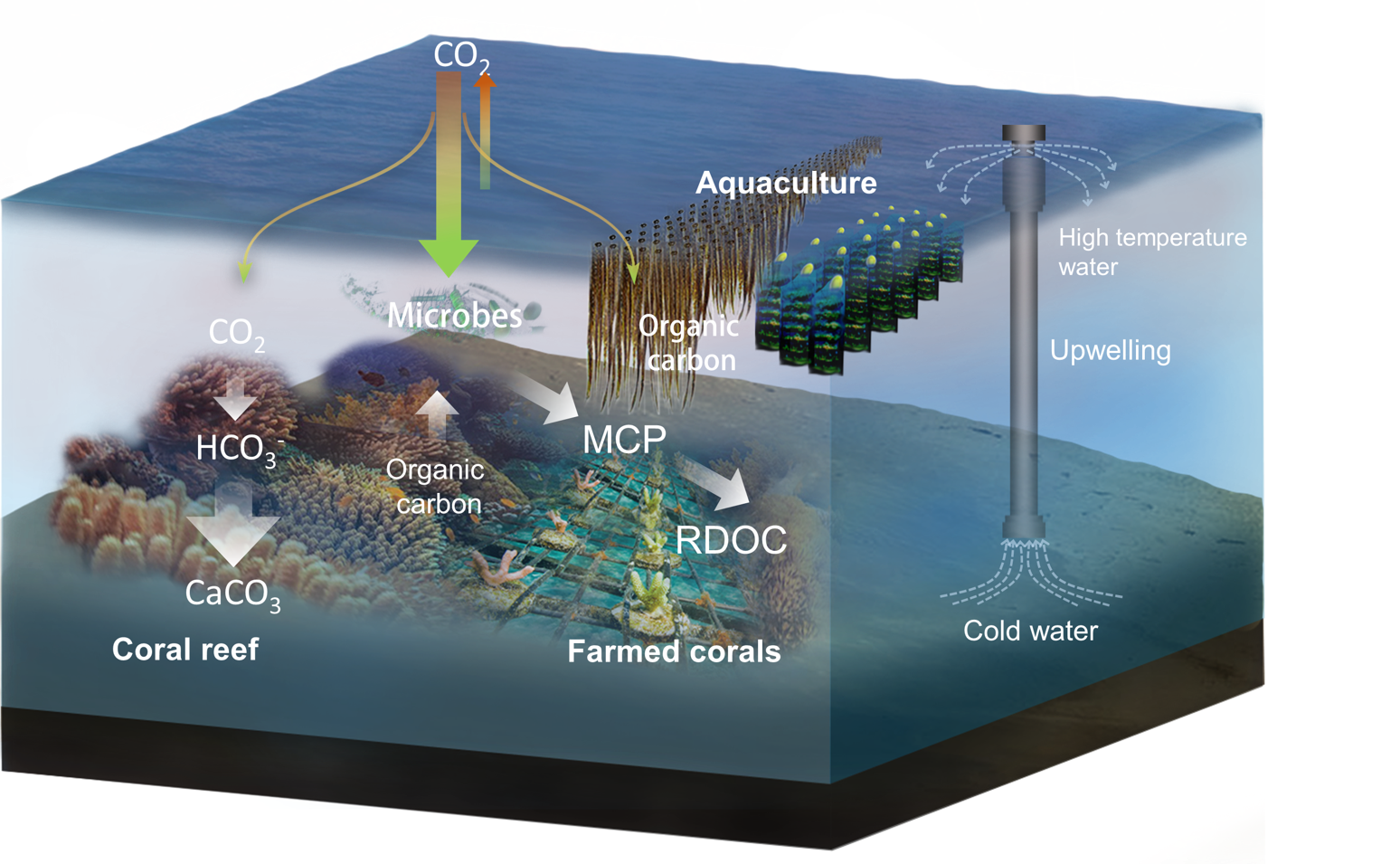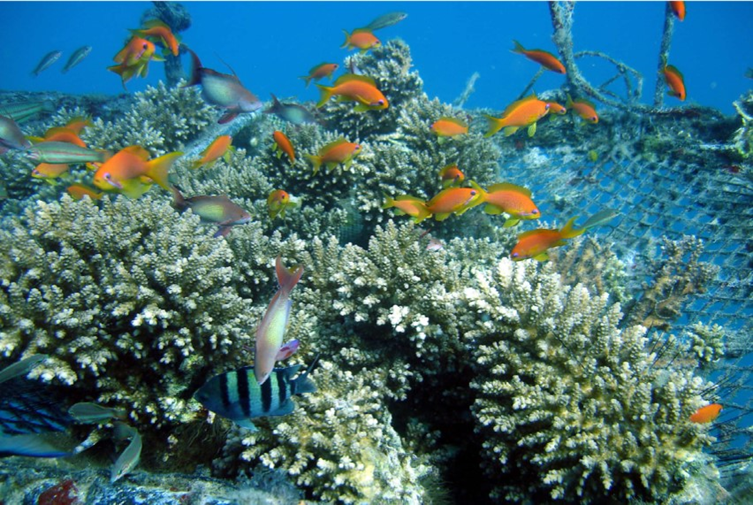The goal of achieving carbon neutrality in the next 30-40 years is approaching worldwide consensus and requires coordinated efforts to combat the increasing threat of climate change. Two main sets of actions have been proposed to address this grand goal. One is to reduce anthropogenic CO2 emissions to the atmosphere, and the other is to increase carbon sinks or negative emissions, i.e., removing CO2 from the atmosphere.
The world’s oceans have a gargantuan capacity to serve as a CO2 buffering system, storing up to 93% of the CO2 in the Earth’s ecosystem. They are estimated to have absorbed 30-37% of fossil fuel emissions since the 1960s, thus playing a significant role in mitigating CO2 accumulation in the atmosphere. Marine organisms play a vital role in CO2 capturing as they account for approximately 55% of global biological carbon fixation.

Professor Chuanlun Zhang and Associate Professor Yuze Wang from the Department of Ocean Science and Engineering (OSE) at the Southern University of Science and Technology (SUSTech), together with Professor Nianzhi Jiao, a member of the National Academy of Sciences of China from Xiamen University and a total of 18 experts from 13 domestic and foreign institutions, recently summarized the approaches and mechanisms of Ocean Negative Carbon Emission (ONCE) for reducing carbon emissions.
Their relevant research achievements were published in the top international multidisciplinary journal Science Bulletin, entitled “Eco-engineering Approaches for Ocean Negative Carbon Emission”.

Figure 1. Five main approaches and mechanisms to increase Ocean Negative Carbon Emission (ONCE)
Nianzhi Jiao of Xiamen University pioneering on microbial carbon pump research, has advocated eco-engineering approaches for ONCE, which aims to enhance carbon sinks in the marine environment. An international program is being established to promote coordinated efforts in developing ONCE-relevant strategies and methodologies, which focus on marine ecosystem-based approaches and pay special attention to mechanisms that require transformative research, including those elucidating interactions between the Biological Pump (BP), the Microbial Carbon Pump (MCP), and Microbially Induced Carbonate Precipitation (MICP). ONCE approaches are thus expected to be beneficial for both carbon sequestration and the alleviation of environmental stresses.
The five main approaches and mechanisms to increase ONCE are highlighted in Figure 1. Firstly, negative emissions can be enhanced by manipulating two key variables of the marine carbonate system: the dissolved inorganic carbon (DIC) pool and the alkalinity pool. An increase in alkalinity would allow the water to hold more DIC, which in turn will be supplied by the atmosphere until a new equilibrium with the atmosphere is reached, thereby promoting biological carbon fixation.
Secondly, negative emissions can be increased through integrated BP, MCP, and MICP (Figure 2). BP can accelerate the export of excess dissolved carbon present in alkalinized waters. This part of the BP process can be linked to MCP to allow aggregation of recalcitrant dissolved organic carbon (RDOC) molecules with the sinking transparent exopolymer particles. MICP can further process the sinking transparent exopolymer particles and other organic matter, including RDOC, to drive carbonate precipitation in the seafloor sediment and to achieve permanent storage of CO2.

Figure 2. A conceptual model of microbially induced carbonate precipitation (MICP) integrated with engineered CO2 fixation by microalgae
Thirdly, negative emissions can be increased by means of artificial upwelling (Figure 3). Artificial upwelling can transport oxygen-saturated surface water down to lower depths by compensational mixing, while high-DIC and nutrient-rich water from lower depths are transported up to the euphotic zone to fuel carbon fixation. Artificial upwelling is an ecological modification within the ecosystem rather than perturbation of new nutrients from outside, which is expected to enhance the production of organic matter in the euphotic zone and mitigate the formation of hypoxia and nutrient “bombs” in deep water. The implementation of artificial upwelling can improve the output of particulate organic carbon (POC) and the production of RDOC, thereby improving the ocean carbon storage capacity.

Figure 3. A schematic diagram showing the possible function of artificial upwelling in maintaining the health of an aquaculture
Fourthly, negative emissions can be achieved through habitat restoration of coastal wetlands (Figure 4). Coastal wetlands (e.g., mangroves, salt marshes, seagrass beds) are considered as important habitats for negative emissions, contributing 50% of carbon burial. Restoring wetland habitats is a powerful engine for effectively enhancing negative emissions.

Figure 4. A conceptual model for microbially driven carbon sink formation and transformation in mangrove wetlands
Fifthly, negative emissions can be increased through the protection and restoration of coral reef ecosystems (Figure 5). Coral reefs constitute a significant component of the carbon pool with potential for negative emissions in the marine ecosystem. The estimated global production of coral reefs is ~0.9 Gt Carbon/year, with the primary productivity being one order of magnitude higher than that of oceanic, non-reef ecosystems. It is of great theoretical and practical value to analyze the carbon “source/sink” properties of coral reef ecosystems and explore their carbon sink potential.

Figure 5. A submerged floating coral nursery in Eilat, Israel, in blue, oligotrophic waters, several kilometers away from the closest natural coral reef (Photo credit: S. Shafir)
As an international program, the purpose of the ONCE project is to promote coordinated efforts in developing sustainable methodologies focused on ecologically sound engineering approaches. All cutting-edge ecological/biogeochemical manipulations to support ONCE must be carefully tuned to fit into the framework of BP, MCP, and MICP for maximum sequestration of carbon in inorganic/organic, biotic/abiotic, and particulate/dissolved forms.
Combined with experimental simulations and field studies, the ONCE program is expected to lay the foundation for a variety of negative emission models and measures with quantifiable, reproducible, and verifiable features that can be used for carbon trade in the near future. Global efforts in a cooperative and collegial spirit are required to make the ONCE program effective in serving the grand goal of carbon neutrality.
Prof. Chuanlun Zhang from the Department of OSE at SUSTech is the first author of this paper and serves as a co-corresponding author with Prof. Nianzhi Jiao of Xiamen University. The Shenzhen Branch of the Guangdong Provincial Laboratory of Southern Marine Science and Engineering (Guangzhou), based in the Department of OSE at SUSTech, is the first affiliated institution of the paper.
The above research was supported by a number of domestic and international projects, including the Carbon Neutralization Program of the National Natural Science Foundation of China (NSFC) and the Shenzhen Key Laboratory of Marine Geo Omics Research.
Paper link: https://www.sciencedirect.com/science/article/pii/S2095927322005369
To read all stories about SUSTech science, subscribe to the monthly SUSTech Newsletter.
Proofread ByAdrian Cremin, Yingying XIA
Photo By